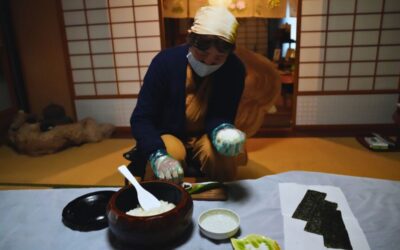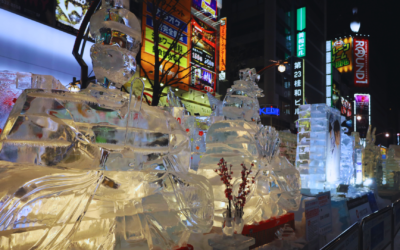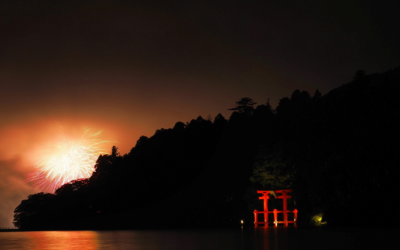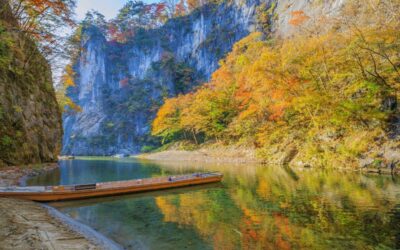Both Tokyo and Osaka are arguably the leading cities in Japan, each unique in its own way. Tokyo, the bustling metropolis, and Osaka, the vibrant food capital, offer distinct lifestyles and opportunities. But ultimately, which is the better city to live in? This question sparks a heated debate between the great Kanto and Kansai regions.
In this blog, I will attempt to settle the battle of Tokyo vs Osaka by exploring various aspects of life in these two cities. From living costs and job opportunities to cultural differences and local attractions, we’ll delve into what makes each city special and what factors you should consider when deciding where to live.
Living in Tokyo
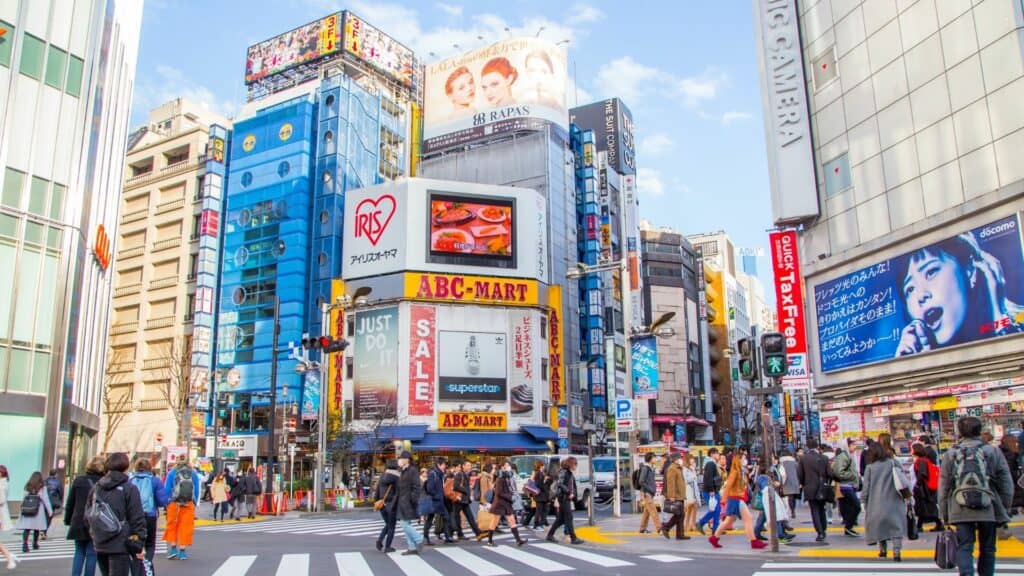
Tokyo is the metropolis dreamland and the city of opportunity for those who want to take their career one step further. Overflowing with an array of different personalities, Tokyo holds the number one spot for the largest population in Japan with 9.5 million inhabitants. From the traditional salaryman on his way to an after-work drinking session in Ginza to a contemporary fashionista roaming the backstreets of Harajuku, Tokyo is the place to experience a different side of the conventional society seen in most prefectures in Japan.
Living in Osaka
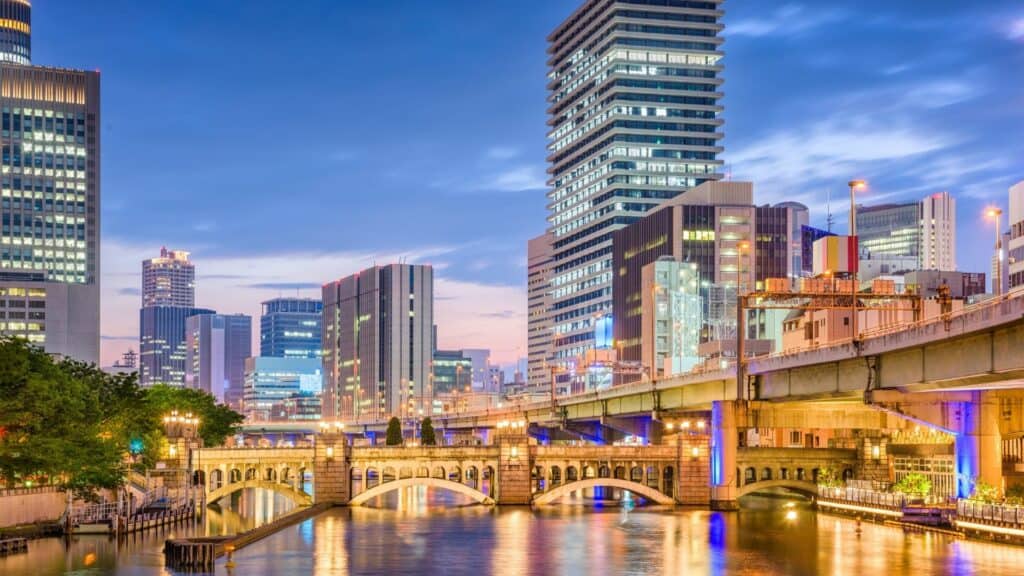
Similarly, Osaka is built-up city in Japan but less so than Tokyo. However, the social dynamic you feel in Osaka is unmatched by any other prefecture. With its extroverted locals running the stores of Japan’s street food capital, it’s impossible not to have a good night in this city. As soon as you step foot into the Dotonbori area, you are instantly greeted by the vibrant culture of Osaka. The aroma of Takoyaki and Okonomiyaki, along with many other mouth-watering foods, follows you around as you look at the neon signs hanging off bar doors, luring you in for a pint of beer.
Both cities have their unique selling points when it comes to tourism, but regarding living in these utopian cities, there are some things you should consider.
Living Costs: Tokyo vs Osaka
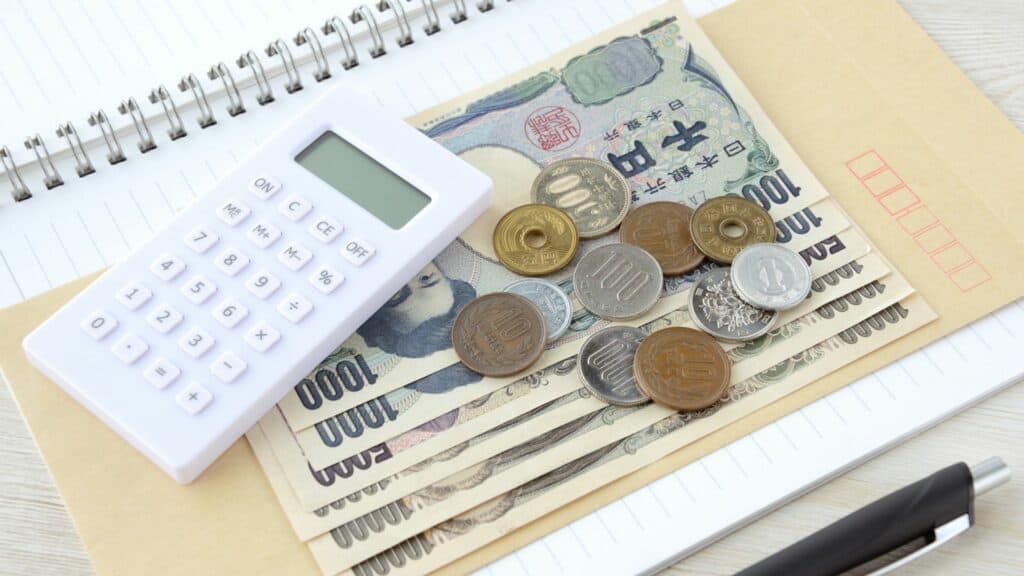
Living costs can vary drastically depending on the individual. If we’re looking at the average person, it’s clear that Osaka is cheaper to live in than Tokyo. According to various sources, the average difference in maintaining the same standard of life between the two cities is around 20-35%. The cost of living for a single person is around $1,570 in Osaka and $1,940 in Tokyo.
However, it is important to remember that Tokyo does have a higher salary rate than Osaka. Again, this depends on the job that you have, but the minimum wage is also higher in Tokyo than in Osaka. Considering both factors, it really depends on your personal situation and how centrally you want to live in the city.
Job Opportunities: Tokyo vs Osaka

Being able to sustain a good living is important wherever you live in the world, so it is crucial to find a satisfactory job. Although Osaka is home to many corporate companies, for any foreigners looking to move to this commercial city, it may be harder than expected. Despite the fact that the locals are very friendly and welcoming towards tourists, there are fewer English speakers in Osaka than in Tokyo. There may be a high demand for English teaching jobs varying from elementary to high school, but other than that, many jobs will expect a certain level of Japanese, measured by the JLPT test.
However, for any foreigners looking to move to Tokyo, there are far better job opportunities to choose from. With the help of many websites designed to assist foreigners in finding jobs in Tokyo, a job application can be submitted with a few easy clicks. Although it is expected for any foreigner to know some Japanese, Tokyo has a large ‘Gaijin’ community, which helps create more diversity and a variety of different job roles, including translation work in a big company or development engineer for the next big console game.
Despite this, it is not to say Osaka won’t have any careers suited for foreigners, but it is important to do a lot of research into your potential job role as well as the company you want to work for before choosing which city to move to.
Listed below are some links to job websites
- https://www.workjapan.jp/jobseeker/
- https://jobsinjapan.com
- https://jobs.gaijinpot.com/index/index/lang/en
- https://www.yolo-japan.com/en/
Main Differences Between Osaka and Tokyo
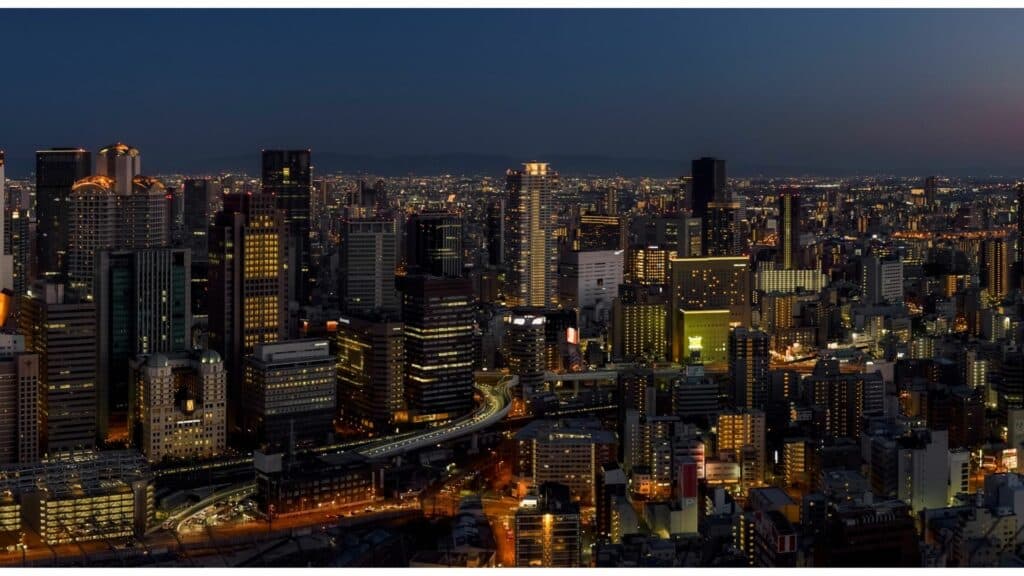
Although Osaka is only around 2.5 hours away from Tokyo, the difference in attitudes between the two cities is very prevalent. This cultural clash stems from many centuries back when Tokyo was rich in Samurai civilisation and Osaka was the most popular port city in the country. As time passed, Tokyo transformed from feudalism to capitalism through the destruction of the city post-World Wars.
The reformation of Tokyo brought in Western influences and an influx of aspiring businessmen hoping to create a better way of living for themselves. These events have created the great capital of Tokyo as we know it today, evolving in technological advances and home to many modern infrastructures.
Similarly, Osaka was also greatly affected by the World Wars, as many industrial and commercial areas were destroyed. However, the ‘Manchester of Japan’ could not be easily defeated and quickly reconstructed its factories and is now the base for many company headquarters and a vast range of entrepreneurs. Their differences are still prominent to this day, some of which are discussed below.
Locals: Tokyo vs Osaka

The people of Tokyo and Osaka are considered very different. The perception of the citizens of Tokyo is that they are prestigious, talk less, and keep to themselves. It can be argued that this is due to the fast pace of Tokyo, where the constant bustle of the busy city creates an individualistic society in which many prioritise their own needs before others. In contrast, Osaka is much more laid back and welcoming towards outsiders. As Osaka preserves its locality, it creates a friendly dynamic for anyone wanting to visit and encourages everyone to join in with the fun.
Dialect: Tokyo vs Osaka

Tokyo’s dialect and Osaka’s dialect are very different. Osaka-ben is part of Kansai-ben, which is considered more casual and laid back as it is mostly used by comedians. However, Tokyo-ben is very formal and polite, creating a constantly sophisticated atmosphere which may be unsettling for some.
Fashion: Tokyo vs Osaka

Tokyo has notably more international high-street brands, whereas Osaka mostly sticks to its traditional Japanese clothing and accessories. Tokyo has its famous Shibuya and Harajuku street fashion, known for being very individualistic and unique. On the other hand, the majority of Osaka’s younger fashion consumers prefer minimalistic and simple styles. However, the older generation in Osaka is famous for having ‘in-your-face’ animal prints such as leopard or zebra.
Food: Tokyo vs Osaka
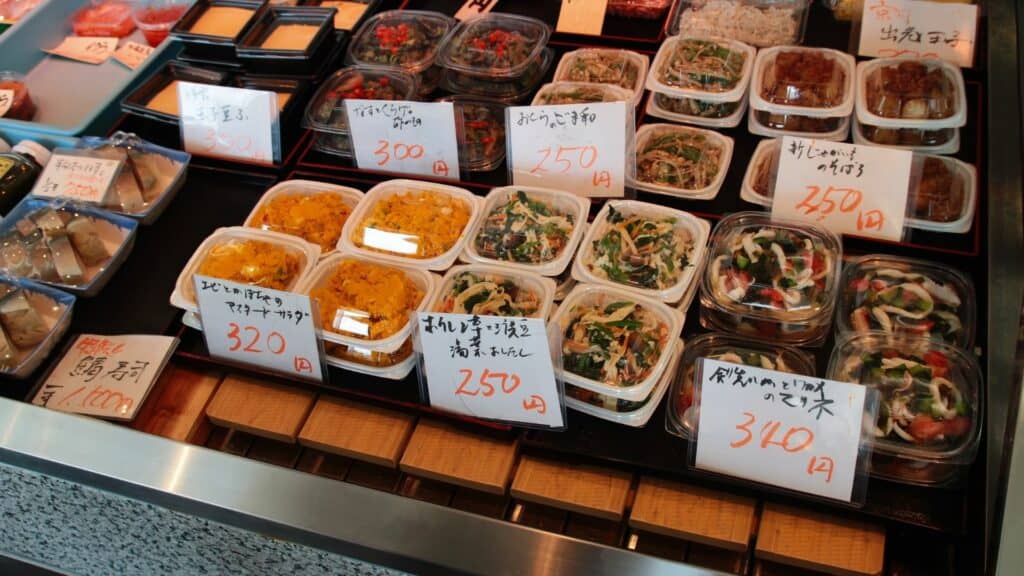
In the Kansai region, where Osaka is based, the flavour of food is usually lighter and saltier. Whereas in the Kanto region, where Tokyo is, food flavours are more prominent and strong. Along with their preferences for different flavours and food specialities, both cities differ in the way they prepare food.
Besides Japanese food, both Tokyo and Osaka have restaurants that offer a huge variety of international cuisines. However, it’s good to note that Tokyo still has more Michelin-starred restaurants than any other city in the world, making it one of the leading food capitals of the world.
Places to Visit and Surrounding Cities: Tokyo vs Osaka
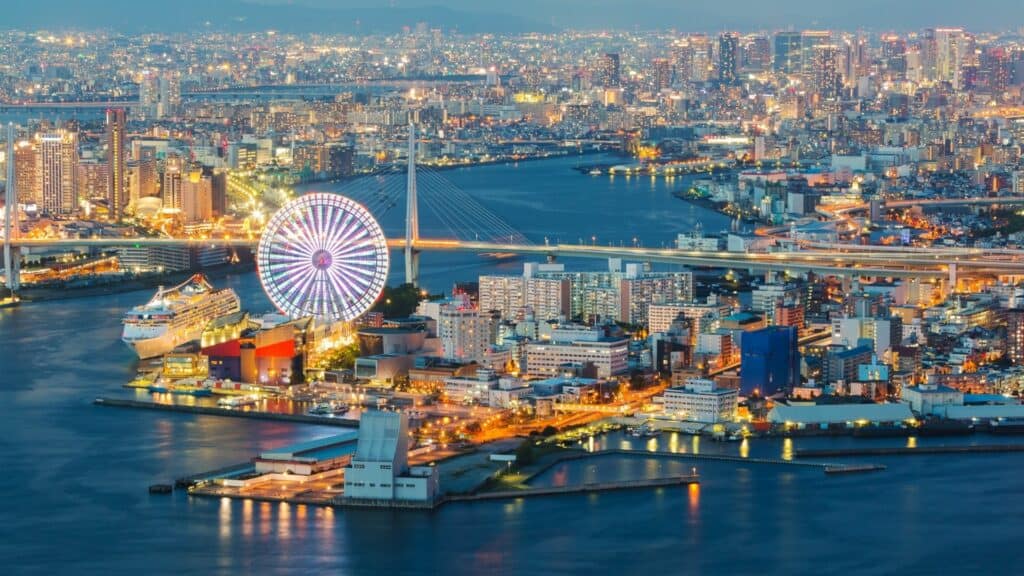
Both Tokyo and Osaka have a wide range of activities and attractions that cater to diverse interests, from historical sites and museums to modern, interactive experiences. Whether you’re a history buff, a foodie, or someone who enjoys vibrant nightlife, Tokyo and Osaka will provide you with a lifetime of fun and exploration. Below, I will list some places you should definitely visit for a fun day out in each city.
Tokyo
Meiji Jingu: A tranquil Shinto shrine located in the heart of Tokyo, surrounded by a lush forest, offering a peaceful retreat from the city’s hustle and bustle.
D47 Museum: A unique museum that showcases the culture, crafts, and products of Japan’s 47 prefectures, providing insight into the diversity of Japanese heritage.
Fuji Q Highland: An amusement park located near Mount Fuji, famous for its thrilling roller coasters and spectacular views of the iconic mountain.
Street snacks down Harajuku: A trendy district known for its quirky fashion and delicious street food, offering everything from crepes to takoyaki.
Robot Restaurants: A futuristic dining experience featuring robot performances, neon lights, and loud music, perfect for a unique and entertaining night out.
Izakaya nights: Enjoy traditional Japanese pub food and drinks in the lively atmosphere of Tokyo’s numerous izakayas, where you can experience local culture and cuisine.
TeamLab Borderless: An immersive digital art museum where artworks move out of rooms, communicate with other works, and interact with visitors, creating a borderless experience.
Sensoji: Tokyo’s oldest temple, located in Asakusa, featuring a vibrant shopping street leading up to the temple gates and a stunning five-story pagoda.
Tokyo Tower: A symbol of Tokyo, offering panoramic views of the city from its observation decks and a variety of shops and restaurants.
Akihabara Maid Cafes: Step into a fantasy world where waitresses dressed as maids serve you in themed cafes, a unique and entertaining aspect of Akihabara’s pop culture.
Ghibli Museum: A must-visit for fans of Studio Ghibli films, this museum offers a magical journey through the animation studio’s history and creative process.
Yayoi Kusama Museum: Dedicated to the works of the avant-garde artist Yayoi Kusama, this museum features her famous polka dot and infinity room installations.
Osaka
Osaka Castle: A historic landmark and symbol of Osaka, surrounded by beautiful gardens and offering insights into Japan’s feudal history.
Universal Studios Japan: A popular theme park with thrilling rides and attractions based on Hollywood movies, including the Wizarding World of Harry Potter.
Osaka Kaiyukan Aquarium: One of the largest aquariums in the world, featuring a diverse range of marine life and a massive central tank with whale sharks.
Street food in Dotonbori: A bustling area known for its neon lights, vibrant atmosphere, and delicious street food, including takoyaki and okonomiyaki.
Shinsaibashi-suji Shopping Street: A lively shopping arcade offering a mix of high-end boutiques, chain stores, and unique local shops.
Tsutenkaku: A retro tower offering panoramic views of Osaka and surrounded by Shinsekai, a neighbourhood known for its nostalgic charm and eateries.
Sumiyoshi Taisha Shrine: One of Japan’s oldest Shinto shrines, known for its unique architectural style and beautiful grounds.
Shinsekai: An old neighbourhood with a distinctively retro atmosphere, featuring cheap eats, arcades, and the iconic Tsutenkaku Tower.
Osaka Museum of Housing and Living: A museum that recreates Osaka’s streetscapes from the Edo to Showa periods, offering a glimpse into the city’s past.
Hozen-ji Temple: A small but charming temple known for its moss-covered statue of Fudo Myoo, where visitors splash water as an offering.
The surrounding prefectures around Tokyo and Osaka are also great places to visit and are famous tourist destinations. Near Tokyo, Yokohama and Kawasaki offer additional attractions and experiences. Osaka is close to Kyoto and Nara, which are renowned for their historical and cultural sites. These areas are easily accessible by purchasing a Shinkansen ticket at your local station, making day trips convenient and enjoyable.
Making Your Decision: Tokyo vs Osaka
Deciding between Tokyo and Osaka ultimately comes down to your personal preferences and lifestyle needs. Both cities offer a wealth of opportunities, vibrant cultures, and unique experiences, but they cater to different types of individuals.
Tokyo, with its fast-paced life, diverse job market, and extensive cultural and entertainment options, is ideal for those who thrive in a bustling metropolis. Its higher living costs are offset by greater job opportunities, particularly for foreigners, and a rich array of activities and attractions.
Osaka, on the other hand, provides a more laid-back atmosphere with a strong sense of community and a lower cost of living. Its famous food scene, friendly locals, and historical sites make it an attractive option for those seeking a more relaxed lifestyle without sacrificing urban conveniences.
Consider what aspects are most important to you—be it job opportunities, living costs, social dynamics, or cultural experiences—and weigh them against what each city has to offer. Whether you choose the dynamic energy of Tokyo or the warm hospitality of Osaka, both cities promise a fulfilling and enriching life in Japan.



